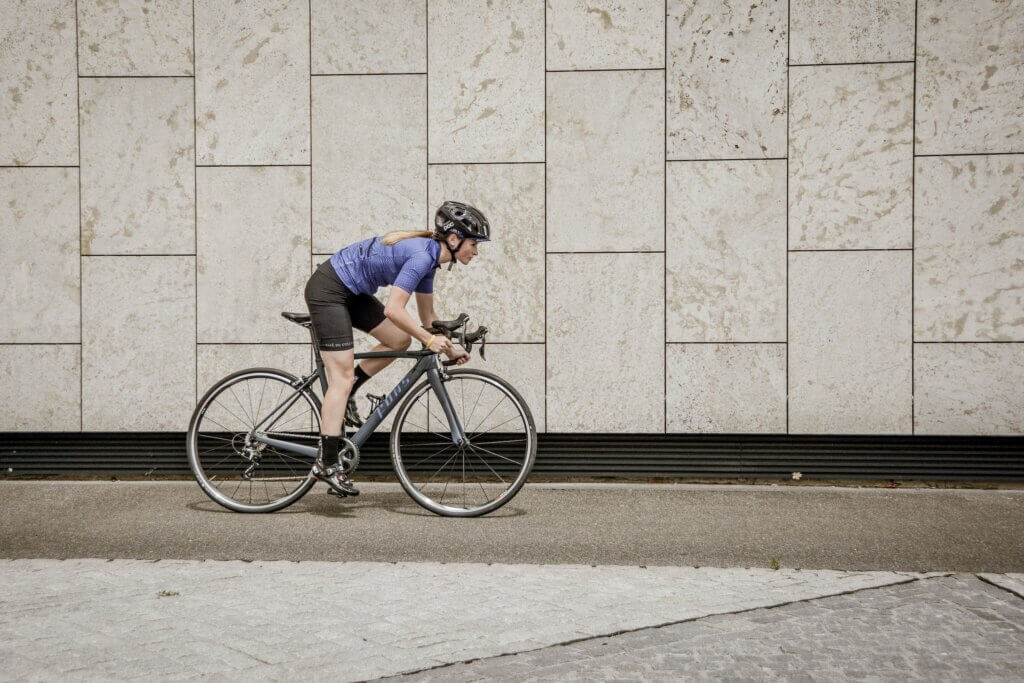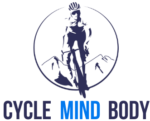Embarking on a journey to a healthier, fitter you? Look no further than cycling. Cycling is not just a recreational activity; it’s a powerful tool for shedding unwanted belly fat.
In this comprehensive guide, we will explore the tips and techniques that make cycling an effective and enjoyable means to reach your weight loss goals.
How Cycling Can Melt Belly Fat
Weight loss, in essence, is a process that occurs when the calories burned exceed the calories consumed. However, when it comes to shedding those stubborn pounds around the midsection, the concept of spot reduction has long been a topic of interest.
Spot reduction refers to the idea that you can target fat loss in specific areas of your body through localized exercises. Many individuals yearn for the ability to sculpt a leaner, more defined waistline, and in the quest for a toned midsection, cycling emerges as a compelling solution.
Cycling, as a full-body workout, engages multiple muscle groups, thereby increasing overall calorie expenditure. While spot reduction itself may be a contentious topic in the scientific community, the effectiveness of cycling lies not only in burning calories but also in its ability to promote a favorable metabolic environment for fat loss.
As you pedal away on your bike, your body taps into stored fat for energy. This metabolic shift, combined with the overall calorie burn, contributes to a reduction in body fat, including the notorious belly fat.
The pedaling motion engages the abdominal muscles, providing a subtle toning effect that, over time, can lead to a more sculpted midsection.
While no exercise can magically melt fat from a specific area, the comprehensive nature of cycling makes it an ideal candidate for promoting overall fat loss, including the reduction of belly fat.
Now, armed with this understanding of the science behind weight loss and the nuanced concept of spot reduction, let’s explore how cycling can be harnessed to effectively target and trim that stubborn belly fat.
1. Interval Training

Interval training, is a game-changer in your quest to shed belly fat, involves alternating between short bursts of high-intensity cycling and periods of lower intensity or rest.
The secret weapon? The afterburn effect, where your body continues burning calories post-exercise, supercharging your belly fat loss.
Getting started is simple. For beginners, initiate interval training with short bursts of intensity—pedal as fast as you can for 20 to 30 seconds, then ease into a slower pace or rest for 1 to 2 minutes.
As your fitness level improves, progressively increase the intensity and duration. Mix it up by incorporating hill sprints or increasing resistance on your stationary bike during high-intensity phases.
Aim for two to three interval training sessions per week, allowing your body time to recover between sessions. For instance, start with a 20-minute session, including five intervals, and gradually increase both the session length and the number of intervals.
Remember, the goal is to push your limits during the high-intensity phases, making each interval count.
By including interval training into your cycling routine, you not only make your workouts more engaging but also turn your body into a calorie-burning furnace, propelling you toward effective belly fat loss.
2. Get Stronger

Beyond the bike, incorporating strength training into your routine plays a pivotal role in enhancing your cycling performance and accelerating fat loss.
Engaging in exercises that target crucial muscle groups not only amplifies your pedaling power but also turbocharges your metabolism, transforming your body into a fat-burning machine.
Start with bodyweight exercises like squats, lunges, and push-ups. These foundational exercises lay the groundwork for building strength and endurance.
Begin with sets of 10-15 repetitions for each exercise, gradually increasing the intensity as your strength improves. To take things up a notch, introduce light weights into your routine, focusing on proper form to prevent injury.
Commit to strength training sessions 2-3 times a week, allowing your muscles to recover between sessions.
The beauty of strength training lies in its long-lasting effects on your metabolism. As you build lean muscle mass, your body becomes more efficient at burning calories, even at rest.
Remember, the bigger your muscles are, the more calories they burn throughout the day. This means that the benefits of strength training extend beyond your time in the gym, contributing significantly to your weight loss journey.
3. Fuel Better

Fueling your body is the key to unlocking your cycling potential and shedding that stubborn belly fat. It’s not just about eating; it’s about nourishing your body with the right mix of nutrients.
A balanced diet, encompassing carbohydrates, proteins, and healthy fats, is your secret weapon for success.
Incorporate a variety of whole foods into your meals, including colorful fruits and vegetables, and proteins like eggs and meats. These choices not only provide the necessary nutrients but also offer sustained energy, crucial for powering through your rides.
Importantly, don’t fall into the trap of starving yourself to lose weight. While intermittent fasting can be beneficial, particularly when strategically incorporated, skipping meals can backfire by slowing down your metabolism and leaving you fatigued.
It’s essential to strike a balance – fasting can have its place, but especially post-exercise, ensure you refuel sufficiently to support recovery and sustain your energy levels. The key lies in mindful eating, where you nourish your body with the right nutrients at the right times, promoting both effective weight loss and overall well-being.
A protein-rich diet is especially beneficial for cyclists aiming to shed belly fat. Proteins help build and repair muscles, supporting your overall fitness goals. Include sources like eggs, meats, and dairy products in your meals.
Focus on incorporating carbohydrates around your exercise sessions for energy and reduce them on rest days to match your lower activity levels.
It’s about making food work for you, aligning your nutritional choices with your cycling routine, and embracing a sustainable approach to achieving your weight loss goals.
4. Rest More

Amid the excitement of cycling, don’t overlook the importance of rest. Rest is not just a luxury but a necessity, forming the missing puzzle piece in your quest for effective fat loss.
When you push your body through intense cycling sessions, it needs time to recover and rejuvenate.
Proper recovery isn’t solely about avoiding burnout; it plays a pivotal role in enhancing your fat loss efforts. Overtraining can be counterproductive, hindering progress and leaving you fatigued.
Therefore, it’s essential to heed your body’s signals, allowing for sufficient rest periods, and observing the transformative effects on your physique.
Sleep, in particular, plays a starring role in your journey to lose belly fat. Aim for a solid 7-9 hours of quality sleep each night. During sleep, your body repairs and rejuvenates, essential for muscle growth and overall well-being.
It’s not just about the quantity but the quality of your sleep; create a comfortable sleep environment and establish a bedtime routine to signal your body that it’s time to wind down. Quality sleep not only aids muscle recovery but also regulates hormones, including those crucial for appetite control.
By prioritizing rest, both in terms of sleep and dedicated rest days between intense rides, you provide your muscles the opportunity to repair and grow, ensuring you’re on the fast track to achieving your desired results.
5. Zone 2 Training

Zone 2 training is a game-changer in your quest to lose belly fat. Zone 2 refers to a steady pace where you should be able to talk comfortably, creating an enjoyable and sustainable workout.
When you cycle at a higher intensity effort you primarily use glycogen (stored carbohydrates) as fuel, whereas Zone 2 training taps into your fat stores for energy instead.
By cruising within this heart rate zone, you encourage your body to burn fat as the primary fuel source, contributing to the reduction of stubborn belly fat. This steady-state approach leaves you feeling less tired and hungry compared to higher-intensity workouts, making it easier to stick to your cycling routine.
To incorporate Zone 2 training into your routine, start by determining your target heart rate. You can calculate this simply by subtracting your age from 220 and then staying within 60-70% of that number. Invest in a heart rate monitor to keep tabs on your beats per minute during rides.
As you pedal within the Zone 2 range, your body becomes efficient at burning fat for fuel, contributing to the reduction of stubborn belly fat. Additionally, this training method helps build endurance, preparing you for longer, more calorie-burning rides.
The balance between intensity and sustainability makes Zone 2 training a sustainable and effective approach for burning fat.
6. Fasted Rides

Fasted rides, where you pedal on an empty stomach, encourages your body to utilize stored fat for energy. When you ride without recently consumed food, your body taps into stored fat for energy.
It’s like turning on a switch that signals your system to burn those stubborn fat reserves. On average, the body can provide around 2,000 to 3,000 calories from stored fat during a fasted ride, making it a substantial source of fuel for longer cycling sessions.
To make fasted rides work for you, start with shorter sessions. Begin by cycling for 30 minutes on an empty stomach before eating any food and gradually extend the duration as your body adapts.
This gradual approach ensures that your body becomes accustomed to burning fat efficiently without overwhelming it. As you gain more experience with fasted rides, you’ll discover that you will not feel much hunger for several hours on the bike.
Staying hydrated during fasted rides is crucial, as water supports your body’s natural processes and keeps you energized.
After your fasted ride, the importance of refueling cannot be overstated. Replenish your body with a balanced meal or snack that includes carbohydrates, proteins, and healthy fats. This refueling process helps your muscles recover and ensures you have the energy needed for your next cycling adventure.
Fasted rides work exceptionally well when combined with Zone 2 training. Riding in Zone 2, at a moderate intensity, complements the fat-burning benefits of fasting. This combination enhances endurance, promotes fat utilization, and accelerates your fat loss journey.
7. Reduce Stress

Cortisol, often dubbed the stress hormone, can indeed undermine your endeavors to shed belly fat. Elevated cortisol levels may lead to increased abdominal fat storage, making stress management a crucial aspect of your weight loss journey.
Cycling itself serves as a powerful stress-buster. The rhythmic pedaling, fresh air, and scenic routes contribute to a sense of tranquility. By immersing yourself in the present moment during rides, you redirect your focus from stressors, promoting mental clarity and relaxation.
Apart from cycling, incorporating stress-management practices into your daily routine is essential. Simple strategies such as setting realistic goals, prioritizing tasks, and maintaining a healthy work-life balance can help reduce overall stress levels.
Additionally, adequate sleep, regular breaks, and nurturing social connections are effective buffers against the negative impacts of stress.
Recognize that managing stress is not only about creating a peaceful mindset but also helps support your body’s natural fat-burning processes. By minimizing chronic stress and practicing mindfulness during your rides, you pave the way for a healthier, stress-free path to losing belly fat through cycling.
8. Be Consistent

Staying consistent is the key to unlocking lasting success with weight loss and improved fitness. Every small effort you make, repeated consistently, accumulates into significant results over time.
To make cycling a reliable part of your routine, turn it into a habit that becomes part of your daily life.
Create a weekly cycling plan, making it a non-negotiable part of your routine. Consider cycling to work or running errands on your bike to effortlessly integrate it into your daily activities.
Celebrate milestones along the way – whether it’s completing a challenging route or hitting a personal distance record. These celebrations fuel your motivation and keep the excitement alive on your journey to shed belly fat through cycling.
Consider joining weekly group rides or finding cycling buddies. Being part of a community adds a social element to your routine, making the journey more enjoyable and creating a sense of accountability.
When obstacles arise, try to get back on track as soon as you can or start some new good habits that suit your current situation. If weather interferes, explore indoor cycling options. If time is tight, break your rides into shorter sessions.
Consistency isn’t about perfection; it’s about finding creative solutions to keep your wheels turning toward a healthier you.

